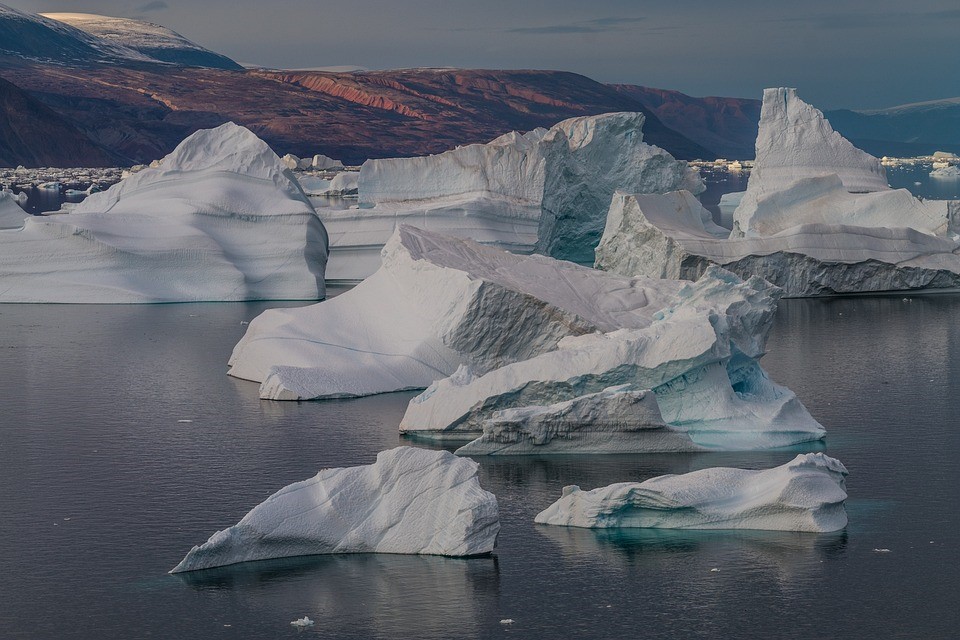As Arctic-like temperatures descend on the United States this week, we are reminded that there is a great frozen north that can impact events outside the immediate region. The Arctic today plays an increasingly important geopolitical role with the growing potential of a year-round new Northern Passage for commercial shipping, technologically available energy rich resources, and an expanded Russian military presence in the area. Moscow is continuing to build military bases there despite Putin’s ongoing war in Ukraine. CNN reports that in an exclusive interview on Friday NATO Secretary General Jens Stoltenberg said there is now “a significant Russian military build-up in the high north,” with recent tensions causing the alliance to “double its presence” in response.
A senior Western intelligence official, according to CNN, says Russia has withdrawn as much as 75% of its land forces from the High North region near the Arctic and reassigned them to the war in Ukraine. Maxar Technologies, a company that provides disruptive earth intelligence to governments and the private sector, was able to produce a series of satellite pictures that show while the number of soldiers may have decreased, Russian radar bases and runways in the Arctic are undergoing improvements over the past year. The geospacial information indicates that even though resources are scarce, it is evidence Putin continues to prioritize fortification and expansion of the country’s defensive posture in the High North. Many analysts agree that a regional conflict among great powers remains unlikely in the near future. Putin’s determination to continue military projects, however, remains significant.
There are important changes to the radar stations at the Olenegorsk site, on the Kola Peninsula in northwest Russia, and at Vorkuta, just north of the Arctic circle. Satellite images also depict work moving ahead to complete one of five Rezonans-N radar systems at Ostrovnoy, a site located by the Barents Sea, near Norway and Finland in Russia’s west. These radar systems, according to Russian military officials, can detect stealth aircraft and objects. Russia is not only building radar systems but radomes, the weatherproof enclosures used to the radar antennas. At the Nagurskoye and “Temp” Air Bases, Russia is also making improvements to the runways and aprons.
The Arctic is key to Russia’s expanding oil and gas sector but more importantly, from a military perspective, it is critical to Moscow’s nuclear defenses. By refurbishing and upgrading Soviet era bases Putin can project power and protect the country’s sophisticated nuclear weaponry and submarine facilities. “That deterrence has always been ready,” said a senior Western intelligence official. “It’s never down to low readiness; it’s a high status all the time,” the official told CNN Friday. Stoltenberg points out that “The shortest way from Russia to North America is over the Arctic North Pole. The strategic importance of these areas has not changed because of the war in Ukraine… We see Russia reopening old Soviet bases, military sites” and its “testing novel weapons in the Arctic and the high north.”
Economically the region’s contributions amount to about 20% of Russia’s total GDP. Although Russia’s land force strength in the region is lower, Moscow’s navy is not impacted, nor is its overall defense posture. The area’s rapidly melting ice will soon open a much shorter commercial shipping route along Russia’s coastline from Southeast Asia to Europe.
Unlike the United States Russia owns a fleet of atomic-powered ice breakers that will enable it to take full advantage of the warming trend. “The war in Ukraine has boosted NATO’s presence in the region. Once Finland and Sweden join the block, as is widely expected, seven out of eight Arctic states will be NATO members,” according to Nick Walsh and Sarah Dean of CNN. They point out that NATO has also become increasingly concerned about the potential sabotage of Norway’s oil and gas infrastructure. Since Russian energy is subject to sanctions, Norway’s natural gas makes up more than 20% of Europe’s supply. To ensure energy security, Stoltenberg says NATO has doubled its presence in the region with submarines and maritime patrol aircraft as a message of readiness and deterrence in the protection of critical infrastructure. Should Putin decide to return troops to the Arctic bases, he can do it in a short period of time.
It will be important to watch developments over the coming year to see if Putin has other plans for the region given th country’s commitment to building permanent infrastructure.
Daria Novak served in the U.S. State Dept.
Photo: Pixabay
